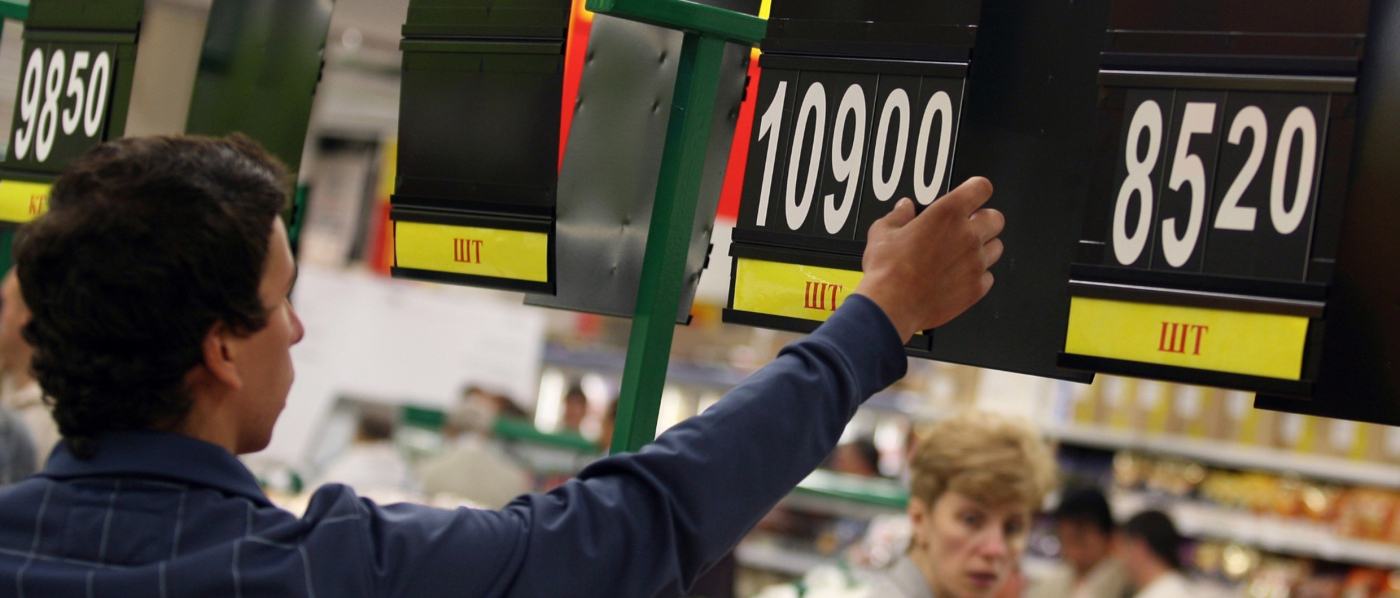What Information Impacts Inflation Expectations: Evidence from a Randomized Controlled Trial
The success of inflation targeting policy is largely determined by the ability of the central bank to anchor inflation expectations of economic agents at its inflation target. However, this is quite challenging to do this in practice, given that households’ rationality in inflation expectations is bounded. This is possibly due to the fact that people are unaccustomed to following the latest economic news or studying macroeconomic statistics. To adjust bounded rational expectations, respondents can be given additional information, for example official inflation data.
Our study examines which information has most impact on inflation expectations. To this end, we ran an experiment. Respondents were randomly divided into groups and received different macroeconomic information; thereafter, we measured their inflation expectations. It turns out that those who received information about a growing money supply have significantly higher inflation expectations: the ‘growth’ of money is linked to a rise in inflation, although this is not necessarily true in reality.
At the same time, some other macroeconomic information (e.g. actual inflation for previous periods and the Bank of Russia’s inflation target) did not influence respondents’ inflation expectations. This means that communication as a monetary policy tool tends to become less effective in an elevated inflation environment, and emphasis should be placed on reducing inflation as soon as possible through monetary tightening.
Information impact and inflation expectations
For a long time, economics lacked reliable methods for establishing causal relationships. How can we be sure, for example, that the information being provided is the reason for a shift in inflation expectations?
At the same time, a methodology that allows to establish causal relationships has long existed in the natural sciences. To test whether X is the cause of Y, we need a ‘counterfactual model’: we change X, keeping all the other conditions constant, and measure the change in Y.
The authors of such an economic method, which deals with conditions other than in the natural sciences, were awarded Nobel prizes, and randomised controlled trial (RCT; see box below) have emerged as the golden standard for identifying a causal relationship. This is the first time that we have applied this method to Russian data to identify the impact of macroeconomic information on inflation expectations.
To this end, the 2024 All-Russian Survey of Consumer Finance (Wave 6) was designed to include the following experiment. All respondents were randomly divided into six groups: one control, and five treatment groups. The control group was given no additional information. Each of the treatment groups received one of the following types of information:
- actual inflation for the last year (7.4% in 2023);
- the Central Bank’s inflation target (4%);
- the Central Bank’s inflation target, and the fact that it was achieved over 2017–2021 (on average, inflation over this period was 4.2%);
- household inflation expectations in 2024, according to a FOM survey (14.2%);
- last year’s growth of the money supply (20% in 2023).
Thereafter, inflation expectations of respondents were measured. In multiple similar studies (link in Russian), inflation expectations are measured twice: before and after the experiment. We take a slightly different approach and only measure expectations once after the experiment. This is primarily because we are focused on whether there is a response to information at all, rather than the extent of change in inflation expectations after receiving information.
The experiment showed that inflation expectations of people who were informed about the growth of money are markedly beyond those of respondents in the control group. The average inflation expectations of respondents in other treatment groups were the same as in the control group.
These results are different to those obtained in similar experiments in developed countries. One such study relied on a large sample of US households in 2022 to find that presenting simple inflation statistics can bring a significant change in inflation expectations, resulting in their better alignment with official data on inflation. Moreover, this effect holds throughout subsequent survey waves, that is, inflation expectations remain at lower levels, albeit gradually increasing, which makes the case for regular central bank communication. The Bundesbank’s experiment of 2023 also showed that respondents adjust their inflation expectations closer to a level of the consumer price index they are shown.
Our experiment is different in that it not only describes households’ expectations in a short period of inflation targeting, but also in a turbulent macroeconomic environment marked by numerous macroeconomic shocks in the years before the survey. Also, information on monetary aggregates tends to remain outside the scope of information treatment in other such experiments. This may be the reason for qualitative differences of our result from data for advanced economies.
Ultimately, of all the information provided, the most crucial information for respondents’ inflation expectations was the growth of money in the Russian economy (20% in 2023).
In all probability, respondents judge the 20% figure as something most believable, based on their personal consumer experience (link in Russian). Furthermore, the money supply and inflation link is possibly still perceived in Russia as an important factor for expectations due to the relatively recent period of hyperinflation in the early 1990s. This suggests that changes in monetary indicators can impact inflation not only through money transactions, but also indirectly through inflation expectations.
The low sensitivity of respondents to communication about past inflation and the Bank of Russia’s target may suggest that people first of all do not trust the information received as they do not subjectively observe low inflation in reality. This lack of responsiveness may further suggest that respondents misunderstand the nature of the past year’s single-digit inflation or the Bank of Russia’s (low) inflation target.
It may seem that people responded to the information about money supply growth simply because the number is large. That is, it was the effect of the number itself, rather than its substantive meaning. We tested the hypothesis about the extent to which respondents are biased towards numbers, specifically towards inflation expectations according to an FOM survey, and those were higher than the Central Bank’s target, past inflation and inflation at the time of the survey. The hypothesis about a bias towards numbers did not prove true.
We also used specific subsamples to assess the impact of information on inflation expectations depending on the demographic or other characteristics of respondents, in order to identify the characteristics of people most sensitive to information. In this case, the growth of money in the economy was invariably the most impactful information. In some cases, information on household inflation expectations in the FOM survey proved significant. Respondents receiving this information adjusted their inflation expectations closer to the resulting forecast.
In practical terms, the results suggest that for households’ inflation expectations to be anchored at a low level, in addition to communication, it is essential to maintain inflation close to target for a long time. In recent years, inflation has remained above the Bank of Russia’s target. This leads to the fact that the communication channel may lose its effectiveness in terms of reducing and anchoring household inflation expectations.
The findings of our study suggest that in an environment of elevated inflation and unanchored inflation expectations, focus should turn to the soonest deceleration and movement of inflation to target in most possible macroeconomic scenarios. This requires tight monetary policy for a sustained period. The results will prove that price stability is achievable. This will open the way to a sustainable decline in household inflation expectations (link in Russian), similar to 2017–2019, when inflation was steadily maintained close to target.









